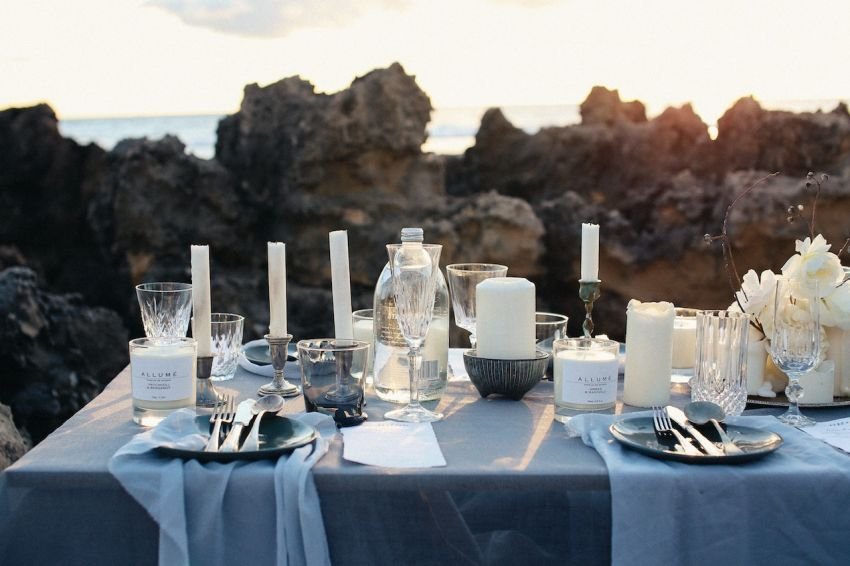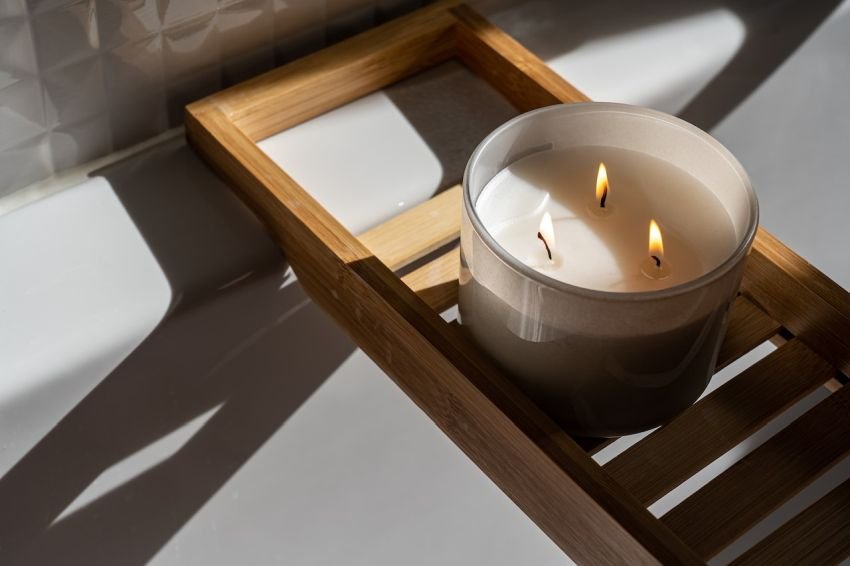Scented candles are delicate and gorgeous items that are a great way to add home fragrance. However, they carry a price tag way heftier than regular candles and you may wonder, isn’t it just wax and scent? Why are scented candles so expensive and what justifies this price?
Let’s look behind the scenes for reasons that explain why these candles carry a big price tag.
Delving Into Reasons That Makes Scented Candles So Expensive
Have you ever come across a situation when you checked out a candle store and picked up a beautifully scented candle but the next moment dropped the idea? Does the price tag weigh heavy on your pocket?
It’s only natural that we consider the components that go into making a scented candle to see if they can explain the expense these candles demand.
Here are the principle components for a scented candle:
- Scent: essential oils, fragrance oils, and blends.
- Wax: paraffin, soy, beeswax, coconut wax, and others.
- Candle containers: glass, tin, ceramic, and more.
- Manufacturing: handmade and machine-made candles.
- Element of aesthetics and ambiance.
- Candlewick: though it doesn’t have a major impact on price, it’s worth considering.
Now that we know the various aspects, let’s look at them in detail and see how it all works.
1. The Scent Ingredient: Essential Oil Can Be Pricey

More often than not, it is the choice of fragrance or essential oil that decides the price of a candle.
Scented candles infused with pure essential oil tend to be expensive. Usually, essential oils are concentrated plant extracts that carry a lot of health benefits. And for some, it is a preferred choice over the artificial scent. Rose, lavender, chamomile, and sandalwood are a few popular essential oils.
What largely makes them expensive is the huge amount of raw material that goes into filling a few milliliters of oil in a bottle.
It can take more than 50 roses to extract two or three drops of rose essential oil. Similar numbers are relevant to other essential oils as well.
The harvesting of flowers like rose, jasmine, and lavender can be labor-intensive. Once plucked, these flowers need proper cold storage rooms or they tend to lose their essence.
Apart from the raw material requirement, some essential oils are expensive owing to their rarity. Agarwood, blue tansy, neroli, rosewood, and frankincense are a few examples. Even a drop of agarwood (oud) essential oil is expensive!
Scented candles with fragrance oils are equally popular. As compared to essential oils these are relatively less in price. This is primarily because these are not natural in origin but artificially created scents. These are an oil blend that is a mixture of natural and synthetic oil that mimics the natural aroma.
However, some fragrance oils can be as expensive as essential oils.
Consider perfumes for a moment. Most of us accept that perfumes can have a high price tag. Well, the fragrance there too comes from essential oils and fragrance oils.
In fact, candles often have to be more careful on what oils they use and avoid those that don’t burn well. This complexity is a part of the cost.
Similarly, candles can use a lot of these good-smelling oils. Sometimes more than comparable perfumes! If you notice the candle has a poor cold throw or hot throw for its scent, it’s probably because the manufacturer tried to save costs.
2. Natural Wax Is Expensive Than Paraffin Wax
Premium candle brands often use organic wax for their candles. Generally, the most common form of wax that goes into candle-making is paraffin, which is a petroleum by-product. Paraffin is easy to work with and is the cheapest option for making candles.
Most candle manufacturers use it because it’s cost-effective. The other advantages are that you can dye it with almost all the colors, it blends well with most of the scents, and gives a robust scent throw.
However, when using it indoors don’t let it burn for longer as it is not environmentally friendly. It causes soot and smoke emissions and can cause health problems for some.
And if you want to look for a gentle alternative to paraffin candles you have scented candles with an organic base.
Scented candles with an organic base are the popular choice of consumers who want to use natural wax at home, for example, palm wax. But it costs a lot to get your hands on it. It is the most expensive wax.
There are other natural wax options, but they’re all more expensive than paraffin. Candles with these natural wax bases are pricier than paraffin wax due to their natural and advantageous features.
Another kind of wax used for expensive candles is beeswax, though it isn’t generally used for scented candles. For honey bees to produce about one pound of beeswax requires that they consume 8-10 pounds of honey!
As you can imagine, that is expensive. On average, beeswax costs around ten times more than paraffin wax.
3. Candle Container: Is It Glass, Tin, Ceramic, Or Something Else?

Most scented candles come poured into a container. The most common vessel that you come across in the market is the glass jar. Though you can also find scented candles in all sorts of containers, including metals, ceramic, or even cement!
There is a cost element to these jars and containers. It’s not just the production and manufacture of the jars that contributes to the cost. Shipping and handling add a fair bit of expense too.
Glass is often favored since it can handle most essential oils. It is inert and doesn’t react with the fragrance or essential oils. Besides, air-tight closure lids work best with glass jars. Although, depending on the wax and oils, other materials find use too.
4 . Mode Of Manufacturing: Hand-Made/ Factory Mass Produced Candles
Scented candles that are hand poured and hand packaged are often more expensive than factory-produced candles.
Hand-made candles are labor-intensive as compared to the factory output. The whole candle-making process is done manually. These candles are hand-poured. Right from mixing the wax with essential oil or fragrance oil, to attaching the wick in the jar, and giving the final touch.
This turns out to be quite time-consuming and laborious as only one scented candle is hand-made at a time.
Once these candles are ready, the packaging is also done manually. Very often a few manufacturers are the vendors too, who transport their final product to the sellers. Thus considering the whole process of manufacturing hand-made candles we can say these are much costlier than factory mass-produced candles.
5. Aesthetic Beauty And The Luxury Element

The aesthetic beauty of a scented candle is a sought-after characteristic for candle lovers. Despite the easy alternatives available that are popular choices for home fragrances, the charm for candles holds on. And their demand continues to rise.
Over the years candles have metamorphosed into luxurious and scented beauties that are available in gorgeous designs. These traits impart an aesthetic touch to them. It also brings about that feel of luxury.
And brands play a role too!
Once a brand gets slapped onto a product, costs rise. In a way, it’s similar to clothing. A cotton t-shirt might be worth a few bucks, but slap a label on it, and it might be able to pull hundreds of dollars.
Scented candles or even decorative candles as an aesthetic element can have luxury value. There are, of course, some well-known candle brands. But luxury and lifestyle brands are in on the action too.
It shouldn’t be surprising that a luxury or premium candle from a famous brand carries an extra-hefty price tag.
Besides, though we talk of expenses, there’s a clear case for profits as well. Perception allows scented candles to be priced higher. This means, sellers often make neat margins on that price.
6. Candle Wick: Candle With A Broader Diameter Require More Wicks

While an essential part of any candle, candle wicks don’t really affect cost all that much. However, there are instances where wicks become representatives for price.
You must have across a few candles that come with more than a wick. The candle may have two to three wicks, or even more. These candles might be more expensive than their single-wick counterparts.
To a simple observer, it would appear that the number of wicks has played a role in the increased cost. If you presumed that it’s the number of wicks that makes them costly, then your assumption needs a revision.
These candles tend to be costlier not because of the number of wicks. But are expensive because these are large candles with a broader diameter that ensures a longer burn time. It’s the volume of candle wax that costs more, not wicks.
These come with more wicks because a large candle will have a large wax pool that can’t function efficiently with a single wick. Candle jars with a diameter of more than 3.5 inches require more than a wick to burn well.
A large wax pool requires more wicks to burn to ensure a steady and uniform burn. This saves the candle from sabotaging. And safeguards the candle from issues like tunneling or unmelted wax sticking to the edges. More burning wicks give a uniform scent throw and light.
Scented Candles: A Perfect Blend of Light, Color, Scent, And Beauty
Everything special comes with a price. And scented candles are not like the regular candles that you see around. In our discussion, we discuss the top reasons to explore the question of why are scented candles so expensive.
There are viable reasons that make them special and costly. Plus, there is the element of perception that helps push the price further.
And I am sure next time you pick up a scented candle and see the price you will know why are good candles so expensive.

